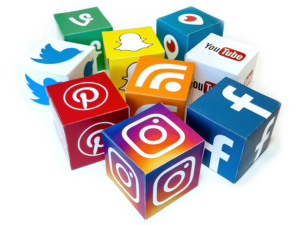Digital Innovation in the Philippines
 Internet usage in the Philippines has tripled since 2010, with 73 million users as of 2020. Filipinos reportedly spend almost 10 hours daily surfing the internet and using social media. The Digital Economy has shown significant growth since 2018, and there is still potential for further development.
Internet usage in the Philippines has tripled since 2010, with 73 million users as of 2020. Filipinos reportedly spend almost 10 hours daily surfing the internet and using social media. The Digital Economy has shown significant growth since 2018, and there is still potential for further development.
In 2020, when COVID-19 hit the Philippines, it highlighted the need for improved digital infrastructure across the country to aid in its economic recovery. However, it was evident that many individuals and businesses had poor internet connectivity and usage. To recover from the financial impact of COVID-19 and work toward a vision of a poverty-free society by 2040, the Philippines aimed to harness the potential of an efficient digital infrastructure that would transform how the country conducted business.
The Digital Divide
In the Philippines, over half of the population is considered internet-poor due to the Digital Divide. This factors in their ability to afford the minimum mobile phone package, which means that more than 58 million Filipinos cannot purchase one gigabyte of mobile data per month.
The Philippines aimed to initiate a new era of digital innovation, which required connecting most rural households to the internet and promoting its use to achieve an inclusive, productive digital economy. This would also support the country’s goal of significantly reducing poverty.
Policies to Facilitate the Digital Economy
In a bid to provide internet connectivity throughout the country, the government focused on creating an affordable, efficient and accessible digital infrastructure for both businesses and individuals. These policies aimed to make the use of digital markets accessible and cost-effective. Also, the government had to encourage the adoption of digital platforms in a country that had traditionally relied on analog methods of doing business. The following are strategies the government implemented to achieve the digital economy goals.
- Promoting Digital Payments: To increase the use of online markets and e-commerce platforms, the government had to increase the usage and familiarity with digital payments, such as Google Pay. In a country with low bank account ownership and heavy usage of cash notes for transactions, this shift to ‘e-money’ was challenging yet vital to ensuring the digital market’s take-off. To achieve this, government agencies made online bill payments mandatory.
- Reducing logistical e-commerce costs: To promote the use of e-commerce websites that trade internationally, the government aimed to reduce the legal confusion and logistical constraints that often hindered imports and exports across the Filipino border. They implemented policies that reduced the costs of items at market entry and customs, making e-commerce more accessible for sellers and cost-effective, ultimately increasing the income of small and medium-sized enterprises (SMEs).
- Providing IT skills for businesses: There was a need to equip businesses and individuals with the appropriate skills to facilitate the maximum utility of the new digital infrastructure. Therefore, the government provided start-up workshops and IT skill training to employers and workers, teaching them how to handle digital information correctly. The multinational technology company Google provided some of the required training.
Impacts so Far
Looking at the everyday lives of Filipinos can offer some insights into the impact of Digital Innovation in the Philippines. For decades, the Digital Divide caused significant inequalities in access to social and economic services. In recent times, however, there have been hopes of minimizing or alleviating such inequalities through ongoing efforts.
For many of the country’s citizens, better internet access opens up the paths to socio-economic opportunities in the online world. And this also applies to those living in rural areas.
The economic significance of improved digital infrastructure is also evident in the steady increase of the Digital Economy’s GDP share value. Digital innovation in the Philippines has led to more inclusive and productive growth, encouraging greater participation from previously excluded individuals. Additionally, opening new markets for people and SMEs has increased cash flows, pushing the country closer to its goal of reducing poverty.
Google services, specifically Google Pay and Google Ads, have also played a significant role in digital innovation in the Philippines by providing businesses and workers with IT training and safe internet practices. Their services have been said to have had a prominent influence on the country’s financial economy post-pandemic.
The Future of Digitalization
Digital innovation in the Philippines continues to positively impact the country’s economy by equipping individuals and businesses with digital capabilities while connecting different regions to broader international markets. It is also promoting the use of e-commerce platforms, leading to higher productivity and inclusivity. While it is yet to fulfill the goal of creating a poverty-free Filipino society, the results so far signal hope for the future.
– Ariana Mortazavi
Photo: Flickr
